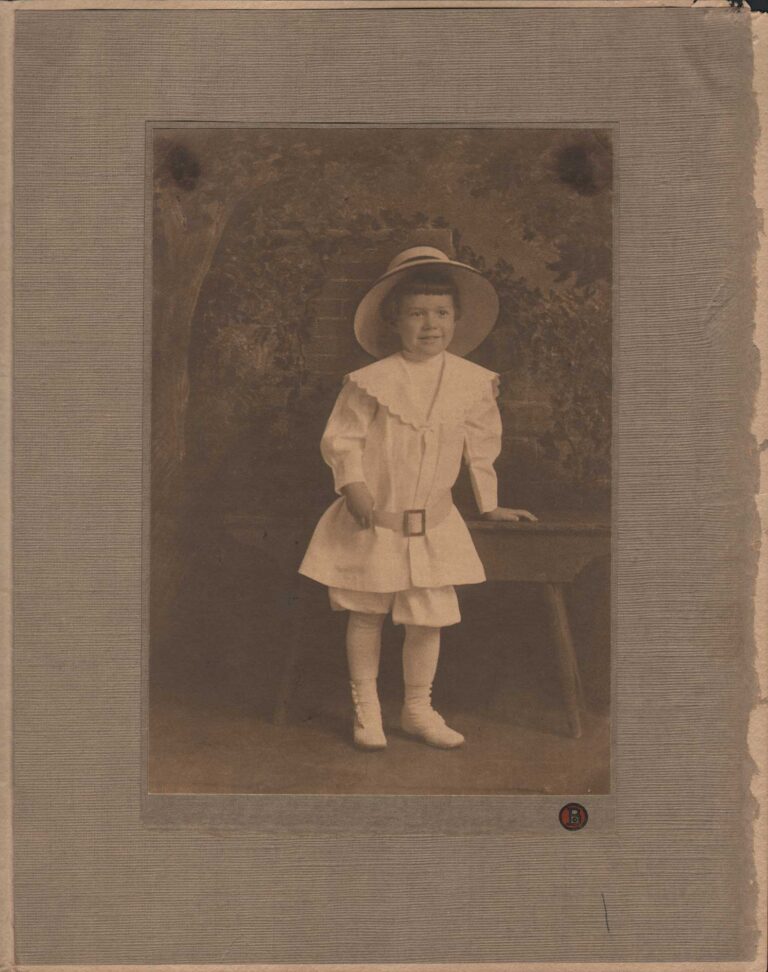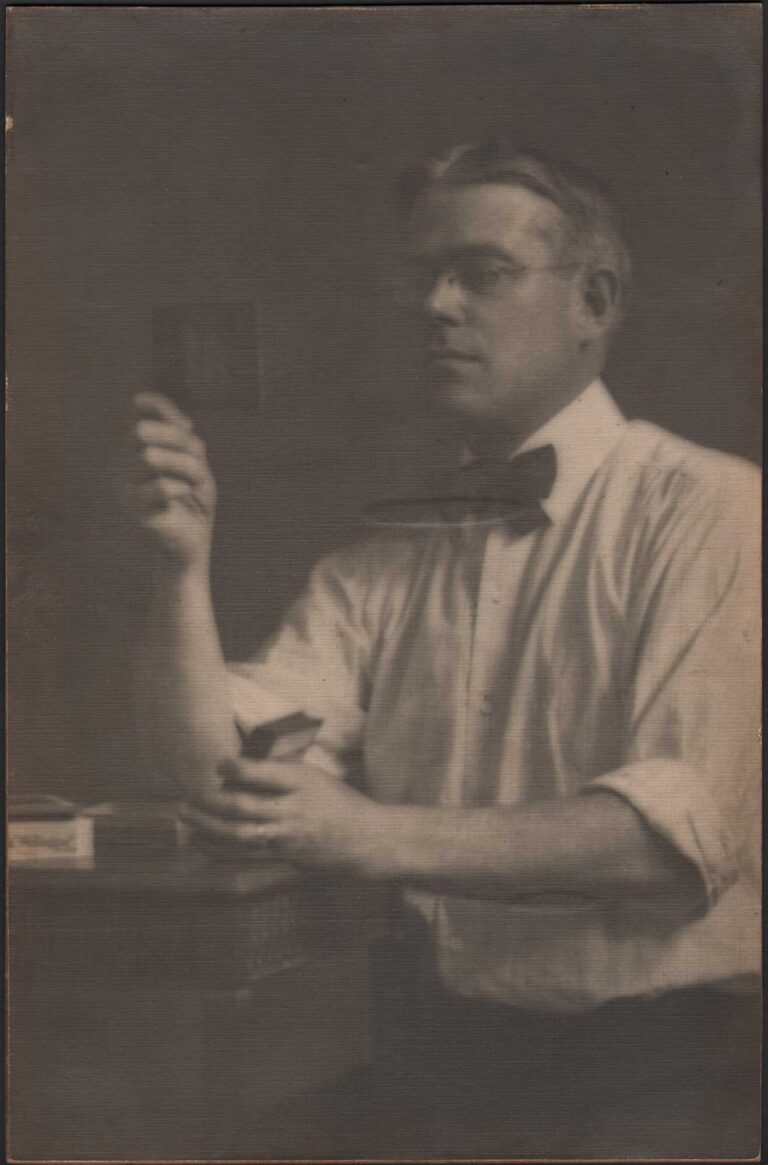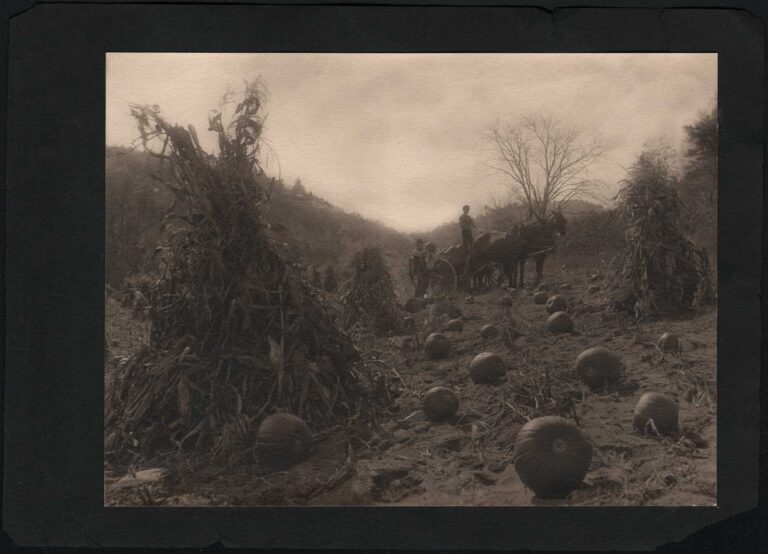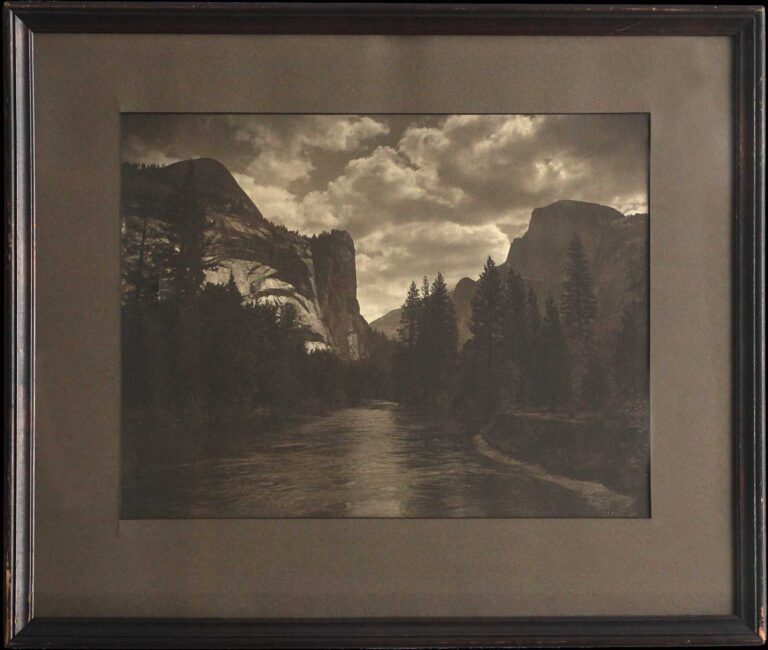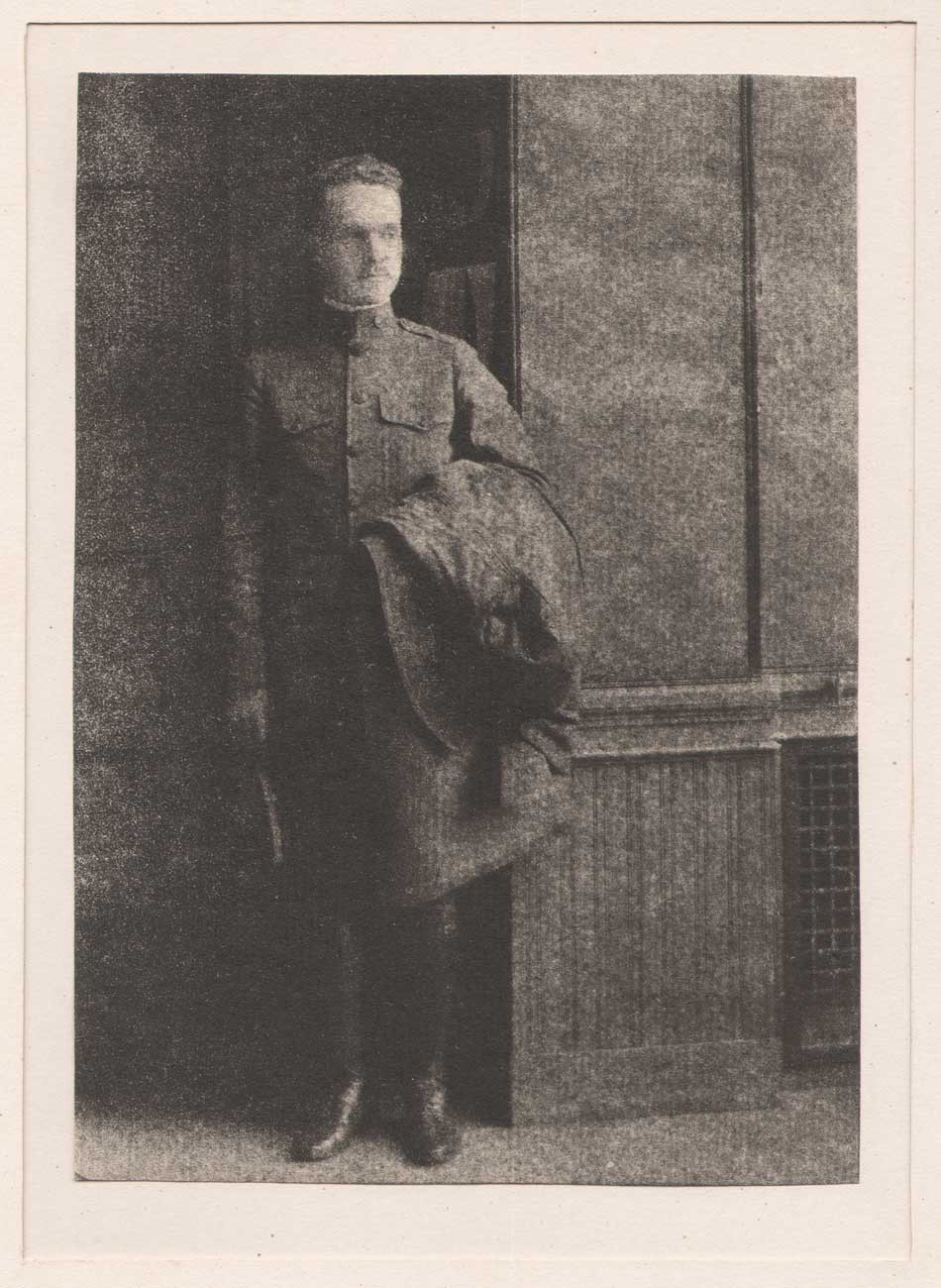
Serviceman wearing WWI uniform
Originally born in Norway, Siegried M. Upton (1878-1970) was an amateur photographer and fifth grade teacher who graduated in 1910 from Teachers College at Columbia University and taught at the Horace Mann School on campus. Her interest in photography most likely began at Teacher’s College c. 1918, where she became a student of Clarence H. White, a founding member of the American Photo-Secession movement who taught an evening course there from 1907 which continued into the early 1920’s.
Upton’s nephew, the English-born artist Charles James Martin, (1886-1955) was likely enrolled in White’s course at the same time as his aunt, and both earned awards in a school-sponsored photography contest in 1918. Trained by Arthur Dow, Martin was a professor of fine arts at Teachers College who succeeded Max Weber as art instructor for the Clarence H. White School of Photography from 1919 – c. 1933. (1.)
Serviceman Wearing WWI Uniform by Upton, the title given this gum bichromate print on laid paper by this website, shows an interior full-length portrait of a gentleman wearing a U.S. issued World War I uniform standing against a wall. Most likely taken somewhere on the Columbia University campus, the subject, although unidentified, shows a passing resemblance to a man in another period full-length photo of Clifford B. Upton, photographer Siegried Upton’s spouse.
Clifford Brewster Upton, (1907-1957) an esteemed member of the mathematics faculty at Teachers College from 1907-1942, was a nationally-known authority on math pedagogy and Secretary of the college during WW1. His involvement with the curriculum designed to train women as health aids and visiting nurses at the school was outlined in the Columbia Daily Spectator campus newspaper for April 17, 1917. An excerpt:
WOMEN’S EMERGENCY COURSES STARTED
To Prepare for Work as Volunteer Health Visitors and Visiting Nurse Aids.
Women can be trained to serve their country in six weeks. Columbia University started in yesterday to show how it can be done. Because they believe that woman has an urgent duty to perform, and that woman can be trained to perform it in a short while, the faculty of Teachers College, Columbia University, began a series of courses yesterday, open to women irrespective of previous preparation. They are called Emergency Courses for Volunteer Health Visitors and Visiting Nurse Aids, but they are more than that. They lead to recommendation for service as visiting nurse assistant in connection with philanthropic institutions that will cooperate. They are intended, according to Prof. Clifford Brewster Upton, Secretary of Teachers College, to capitalize willingness to serve on the part of unoccupied women and to give necessary training to meet perhaps the gravest war need of the country.
“We must have women of all ages and social positions,” says Professor Upton, “to help in two great ways. In the first place, the staffs of hospitals will be depleted. The trained nurse will be wanted at the front. The few technical experts left will be busy with matters in which their skill is essential. They will have no time for the routine work of the hospital. The half strained young woman of intelligence can serve. She can be taught to take temperatures, to feel pulses, to keep case histories. Especially will she be needed when the hospitals will be overfull after the inevitable fall in the standard of living. “What shall we do if infantile paralysis returns in the summer? We need help and service. “It is in the home that more can be done. Young women can encourage deserted mothers, the sick and lonely, and use the minor technical knowledge of a six weeks’ course to make the home more comfortable. The mothers will learn economy and child care.
“Students in Teachers College will learn in six weeks what minimum standards of decent living are; how to plan and supervise a family budget and how to treat common diseases. Problems of water supply, garbage disposal, and food protection will be dealt with, and first aid will be taught. (p. 3)
Schools like Columbia were very active in the war effort in the United States, even with America’s late entry into the conflict. In the same issue of the Spectator on the front page was an article describing over 340 Columbia men, including students and staff drilling in three companies:
DWIGHT FORMS TWO COMPANIES AT DRILL
Third Unit Will be Organized For Men Drilling Three Days Per Week.
OFFICERS TEMPORARY
One Absence Drops a Man From Either Company–Noon Drill Unsuccessful.
Promptly at 3:30 p. m. yesterday, Company A, the first official Columbia unit, was organized. So many of the drill-every-day men appeared for a place in this first company that Major Dwight and his assistants were forced to form a new division under the name of Company B which will hereafter be on a par with Company A and will drill every day just as its brother company is doing. The original plan of calling the squads that are to drill on Monday, Wednesday, and Friday afternoons from 3:15 to 5:45 p. m., Company B, had to be changed and henceforth this division will go under the name of Company C. Because the size of the Armory only allows a limited number of men to maneuver together, the personnel of Company A had to be kept down to 72 soldiers in the ranks excluding sergeants. Many others were anxious to join this initial corps, and when the number of these became large enough Major Dwight formed what is now known as Company B. This latter has at present only 40 men and any men who can drill every day from now on may join this company. Only Companies A and B were allowed to drill with guns yesterday, but when the organization of the companies is completed all squads will again return to drilling with guns.
Officers Only Temporary.
Major Dwight announced that all the corporal and in fact all officers’ appointments in the two companies are merely temporary and changes will be made when the commanders in charge see fit so that all men with any ability will have an opportunity of becoming officers. The authorities want it known positively that one absence will drop a man immediately from Company A and also from Company B when that division is completely organized. Today’s vacancies in the ranks will be filled from the men in Company B and these new men will hold their places perpetually. Over 340 men was the total attendance at the drill yesterday, setting a new high mark in the number present in one day. Of these, 32 were drilled by Lieutenant H. L. Rau ’19 in the “rookie” squad.
Noon Drill Not Successful.
Although at least 100 men were expected to take advantage of the opportunity offered by the military bureau to drill at noon instead of with the regular squads in the afternoon, only five men showed up at yesterday’s first experiment of noon drilling. The test will be tried again today to see if enough men show up. The drill will be in charge of Lieutenant H. L. Rau ’19 and his assistants will be Bacon, Gale, Herbert, Mcllhiney, Ralston, Von Mayhoff, Wallach, Weinkopf, Winans. (p. 1)
provenance: purchased 2012: Charles James Martin California estate heir
1. Background: Siegried M. Upton & Charles J. Martin: records from the Clarence H. White School of Photography held in the Warren and Margo Coville Collection in the Prints & Photographs Division at the Library of Congress compiled by Kathleen A. Erwin: 2015 email to this website from LC curator Verna Curtis. See also background on Martin: Pictorialism into Modernism: The Clarence H. White School of Photography: 1996: p. 84
